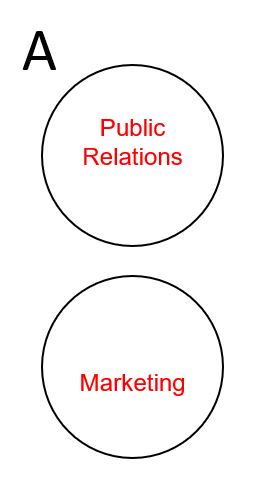PR and Marketing (1): It’s Best to Stick Apart

Let’s begin with what I term the “Apart” or “Silo” model. This describes organisations in which public relations and marketing communications are regarded as separate, non-overlapping, discreet, and functionally distinct activities. In organisations that apply this model, “Public Relations” are probably handled by one team in one office; “Marketing” is the work of another team in another office. And never the twain shall meet.
Although silo functioning in business generally is these days incompliant with the integration theme that prevails in much of the writing on management, for some organisations, this separation can be effective.
If a company sees marketing traditionally, i.e. as referring to the activities and communications involved in the understanding and creation of markets, and public relations as referring to less directly commercial activities and communications involved in the management of the relationship between the organisation and various publics (that plural is important), including non-transacting persons, then the silo is justifiable.
The strengths of this model should be clear. The separation permits and, ideally, encourages specialisation. Marketing professionals concentrate on serving up product and generating demand; PR experts handle the media and worry less about sales. Provided the distinction serves the company effectively, it is valid. For some types of company, this format is optimal. The nature of the company’s markets, products or services, its cultural setting, and – most importantly – its strategic priorities determine the utility of this model. It should not be discounted because “silo thinking” is currently unpopular. If it retains or generates value (as specialisation is wont to do), this format is positive.
